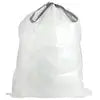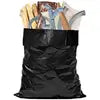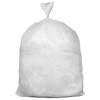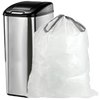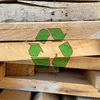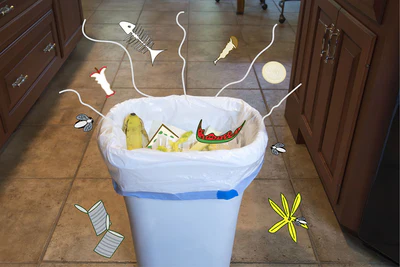Usually, when you read something about how humans are treating the environment, you have to brace yourself. Bad news is everywhere. That’s what we were thinking when we first saw the latest report from the U.S. Environmental Protection Agency. The EPA recently released an in-depth report on the state of garbage and recycling in America. The full report is enormous: 186 pages of facts and figures about what people do with old refrigerators and the rate at which municipal compost programs are growing. (Even the name is long: Advancing Sustainable Materials Management: Assessing Trends in Material Generation, Recycling and Disposal in the United States.) There’s a slightly more digestible fact sheet available, but it still clocks in at 22 pages of dense information. Realistically, who has time to read that?
We made the time. As you might have noticed, we’re extremely passionate about recycling, and we wanted to dive into all that data to see what we could find. Some of the things we discovered were so encouraging that we wanted to share them with you, in one quick, easy-to-understand blog post. It’s so easy to feel as if filling up your recycling bin every week is just a tiny drop in the bucket, and to wonder if it really makes a difference. After spending so much time with the EPA report we can tell you for sure: it makes a huge difference. Of course, we’ve still got a long way to go, but the report had some great things to say about that, too.
The Good News: What We’re Getting Right
The EPA has been gathering data for this report for more than 30 years: a full generation’s worth of statistics about trash and what we’re doing with it. It turns out that a lot of great things can happen in that amount of time. This report focuses on the figures from 2013 for Municipal Solid Waste, aka MSW. MSW is pretty much everything thrown away by residences, hospitals, schools, and businesses, but doesn’t include construction waste or industrial or hazardous waste. Basically, it’s stuff like food, packaging, yard trimmings, old furniture, out-dated technology and car parts. Here are the best and brightest findings:
- We’re still making a lot of garbage (4.40 pounds per person per day) but we’re now at one of the lowest rates since 1980.
- We’re recycling MUCH more than ever before. The recycling rate has grown from less than 10 percent of generated MSW in 1980 to over 34 percent in 2013.
- The 87 million tons of MSW which was recycled and composted in 2013 resulted in an annual reduction of 186 million tons of carbon dioxide equivalent emission. That’s like erasing the annual emissions from more than 39 million cars.
- We’re now recovering and recycling 99% of lead-acid batteries: a first in the history of recycling.
- In just a year, we’ve seen huge improvements in certain types of recycling. Consumer electronics recovery has seen the biggest jump: we’ve gone from 30.6 percent, (or 1 million tons) in 2012 to 40.4 percent (1.27 million tons) in 2013.
- Yard trimming composting is another big growth area. We’re up to 60.3 percent, which equals 20.60 million tons: that’s 130 pounds of yard trimmings for every person in the country!
- We’re also doing a good job with paper recycling. Over 95% of Americans have access to paper recycling where they live, and more than 63 percent (43.4 million tons) of paper and paperboard was recovered for recycling in 2013.
- When you put the yard trimmings composting and paper recycling together, you get one huge result: they have rescued 25 percent of all municipal solid waste generated from landfills and combustion facilities. That’s right: a full quarter of all the trash we make.
- The USA has the capacity right now to process 2 billion pounds of soda bottles annually. Right now we’re only collecting 1.4 billion a year. The demand for recycled plastic is constantly growing, and we aren’t keeping up yet.
- Likewise, the demand for recycled aluminium cans is huge, but we throw away almost half. Those cans in the landfill are worth almost $1 billion. Imagine what we could do for our country with that money if it was in our budget instead of in the trash.
- Food waste is the largest category of unrecovered MSW which ends up in landfills. Only 5% of food waste was recovered, even though pretty close to 100% of it could be used in composting or combustion for energy. It looks like this could be a huge area of improvement, and the EPA has a very readable and practical set of resources for anyone who wants to make a difference.
 4.9 out of 5
4.9 out of 5  Mix & Match: Buy any two products for 10% off!
Mix & Match: Buy any two products for 10% off!













